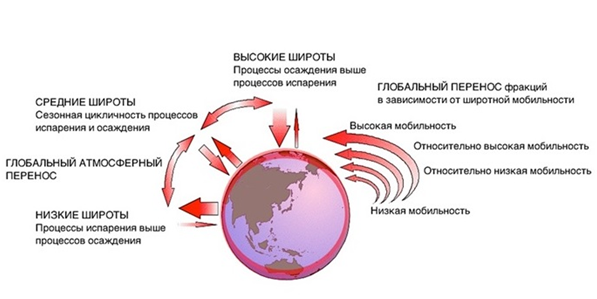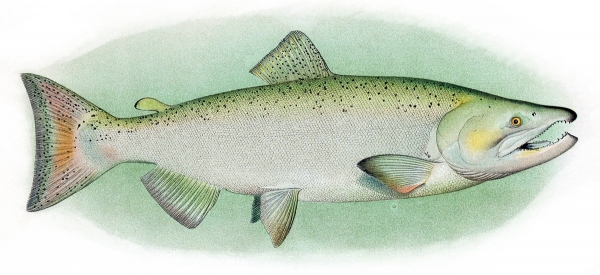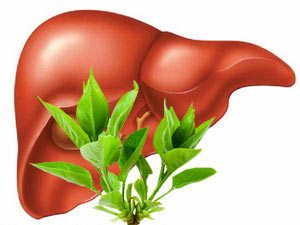 Image: Massel_Marina / FOTODOM / Shutterstock
Image: Massel_Marina / FOTODOM / Shutterstock
According to VTSIOM, every second inhabitant of Russia buys pink. What part of this popular fish can be eaten, said the “Attic” senior lecturer in the School of Biomedicine at far Eastern Federal University Vasily Tsygankov.
Pacific salmon, or in Latin Oncorhynchusis a genus that includes species such as pink salmon, chum salmon, sockeye salmon, coho salmon, Chinook salmon and SIMA. Born in fresh water, they leave in the ocean: some a year, others for 7-9 years. Migration routes of Pacific salmon are still poorly understood, but anglers greeted it from the Japanese Islands in the South to the Arctic ocean in the North. In the ocean fish eaten, accumulating reserves of neutral lipids, or fats, which will be useful to them as a supply of energy and for the production of gametes during spawning. But with him in the body of the fish and accumulate pollutants are lipophilic pollutants. Salmon spawning. Photo: Feng Yu / FOTODOM / Shutterstock
Salmon spawning. Photo: Feng Yu / FOTODOM / Shutterstock
A group of Russian scientists under the leadership of doctor of biological Sciences Olga Lukyanova have studied how many of organochlorine pesticides (OCPS) are deposited in different organs of Pacific salmon.
Greetings from the tropics
Organochlorine pesticides persistent toxic substances of anthropogenic origin.
“The most dangerous of them — and for the dissemination of and impact on living organisms the metabolites of dikhlordifyeniltrikhloretan (DDT) and hexachlorocyclohexane isomers (HCH). Both substances were extensively used in the 1950-1970-ies. These pollutants (pollutant — approx. ed.) is prohibited for use in most countries. However, the HOP continue to use to combat malaria. Apply pesticides primarily in India and China, but to estimate the actual volume is impossible,” said Tsygankov.
Organochlorine pesticides — volatile compounds: steaming in the tropical latitudes, they are deposited in the Arctic. Therefore, the pesticides contaminate even remote areas, explains the scientist.
 The scheme of the global transport of persistent organic pollutants. Image: Vasily Tsygankov
The scheme of the global transport of persistent organic pollutants. Image: Vasily Tsygankov
“These toxicants, having a high affinity for lipids, that is, lipophilicity, and low rate of degradation and excretion, can accumulate in fatty tissues of fish, birds, marine mammals, in particular man, and be involved in various biological processes, resulting in the observed changes in immunological status, mutagenic and teratogenic anomalies (violation of embryonic development influenced by physical, chemical or biological agents — approx. ed.), “said Tsygankov.
Edible-inedible
Russian scientists have searched for organochlorine pesticides in samples of organs of four species of Pacific salmon. The pink and chum salmon, the researchers examined the muscle (fillet), liver, milk, eggs, and whole carcass. From Chinook and sockeye salmon muscle and liver. The content of organochlorine was pesticidefree on a gas chromatograph with electron capture detectors.
“Organochlorine pesticides α-, β-, γ-HCH and dichlorodiphenyldichloroethylene — detected in most samples studied.Muscles of fishes are marked by the lowest content in the liver more, more in the carcass, followed by caviar, and the maximum value recorded in the gonads of males,” said Tsygankov.
The total content of pollutants in different organs differ greatly: from 35,4 to 7103 ng/g lipid. The safe containing the least amount of these harmful substances, was the muscle of pink salmon.
 Adult male pink salmon. Image: The Fishes of Alaska (1907) / Wikipedia
Adult male pink salmon. Image: The Fishes of Alaska (1907) / Wikipedia
Most pesticides contain the liver of sockeye salmon (7103 ng/g), it also recorded the highest number of HCH (6453 ng/g). The highest content of DDT was also found in the liver, but this time, Chinook salmon (3022 ng/g).
 Adult male Chinook salmon. Image: The Fishes of Alaska (1907) / Wikipedia
Adult male Chinook salmon. Image: The Fishes of Alaska (1907) / Wikipedia
Comparison of pesticides in fillet and liver in all four species of fish showed that the proportion of these substances in the pink salmon and chum about the same, but at the same time, significantly lower than in the bodies of Chinook salmon and especially sockeye salmon.
 Adult male sockeye salmon. Image: The Fishes of Alaska (1907) / Wikipedia
Adult male sockeye salmon. Image: The Fishes of Alaska (1907) / Wikipedia
In the chum salmon carcass accumulates significantly more organochlorine pesticides than in the trunk of the salmon. According to the authors of the study, the reason being that chum salmon are more fatty, and, unlike the pink salmon spends at sea more than one year, 2-5 years, receiving more harmful substances. Sockeye and Chinook salmon also large fish, and because their life expectancy may reach 7-9 years, their bodies accumulate more pesticides.
 Male chum salmon spawning. Image: The Fishes of Alaska (1907) / Wikipedia
Male chum salmon spawning. Image: The Fishes of Alaska (1907) / Wikipedia
“Muscle, or filet, of the fish most often eaten and used in the food industry. The amount of HOP concentrations in the muscle of pink salmon, chum salmon, Chinook salmon and sockeye salmon does not exceed sanitary and epidemiological regulations of the Russian Federation,” said Tsygankov.
“In General, eating far Eastern salmon is not harmful to the health of the population”, — concluded the scientist.
The study was conducted under the guidance of doctor of biological Sciences, leading researcher, Pacific research fisheries Center, Professor, Department of ecology School of natural Sciences FEFU Olga Lukyanova and published in the journal chemosphere is.
Alice Veselkova







